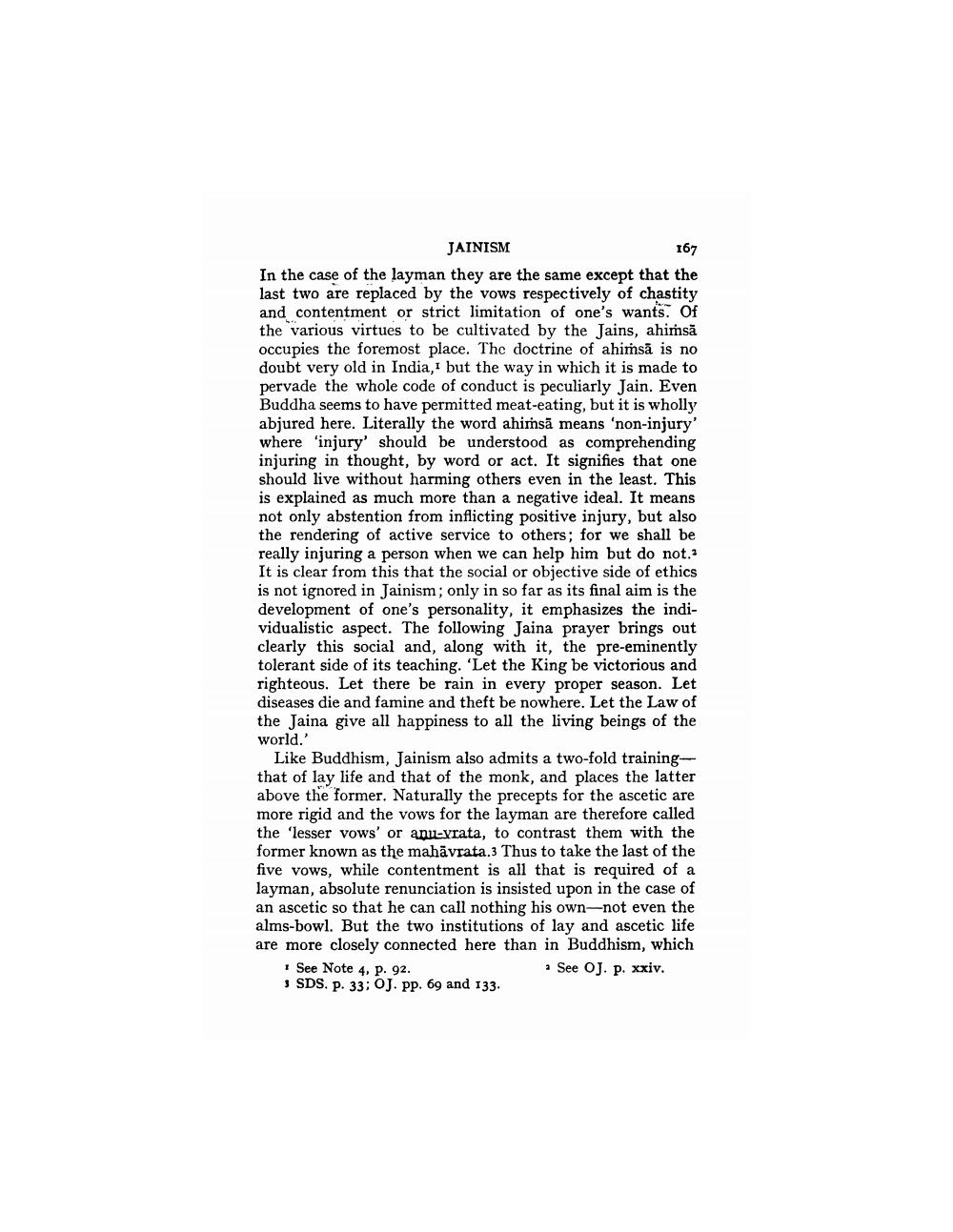________________
JAINISM
167 In the case of the layman they are the same except that the last two are replaced by the vows respectively of chastity and contentment or strict limitation of one's wants. Of the various virtues to be cultivated by the Jains, ahirsā occupies the foremost place. The doctrine of ahimsā is no doubt very old in India, but the way in which it is made to pervade the whole code of conduct is peculiarly Jain. Even Buddha seems to have permitted meat-eating, but it is wholly abjured here. Literally the word ahimsā means 'non-injury' where 'injury' should be understood as comprehending injuring in thought, by word or act. It signifies that one should live without harming others even in the least. This is explained as much more than a negative ideal. It means not only abstention from inflicting positive injury, but also the rendering of active service to others; for we shall be really injuring a person when we can help him but do not. It is clear from this that the social or objective side of ethics is not ignored in Jainism; only in so far as its final aim is the development of one's personality, it emphasizes the individualistic aspect. The following Jaina prayer brings out clearly this social and, along with it, the pre-eminently tolerant side of its teaching. 'Let the King be victorious and righteous. Let there be rain in every proper season. Let diseases die and famine and theft be nowhere. Let the Law of the Jaina give all happiness to all the living beings of the world.'
Like Buddhism, Jainism also admits a two-fold trainingthat of lay life and that of the monk, and places the latter above the former. Naturally the precepts for the ascetic are more rigid and the vows for the layman are therefore called the 'lesser vows' or anu-vrata, to contrast them with the former known as the mahāvrata.3 Thus to take the last of the five vows, while contentment is all that is required of a layman, absolute renunciation is insisted upon in the case of an ascetic so that he can call nothing his own-not even the alms-bowl. But the two institutions of lay and ascetic life are more closely connected here than in Buddhism, which 1 See Note 4, p. 92.
• See OJ. p. xxiv. 3 SDS. P. 33; OJ. Pp. 69 and 133.




